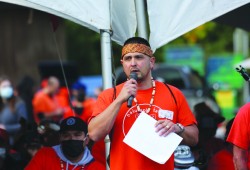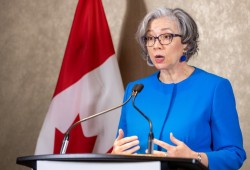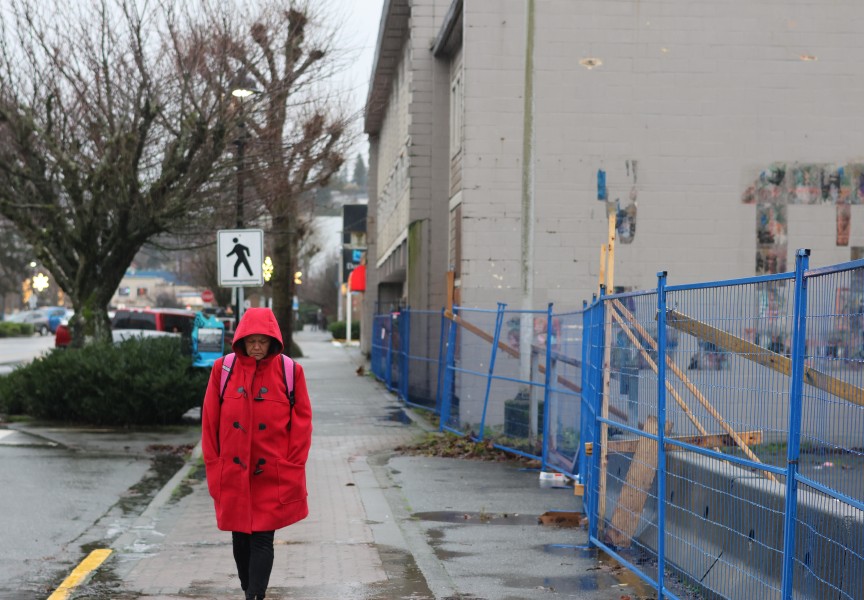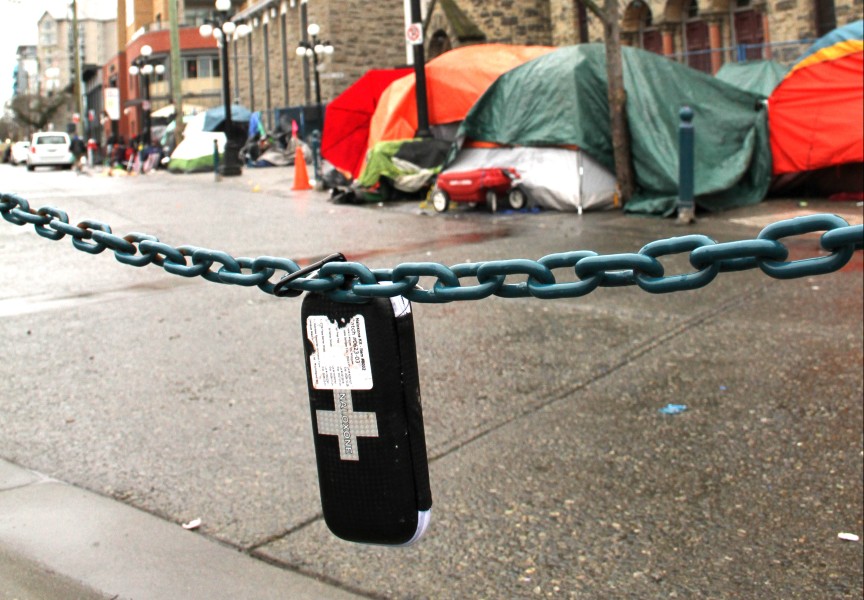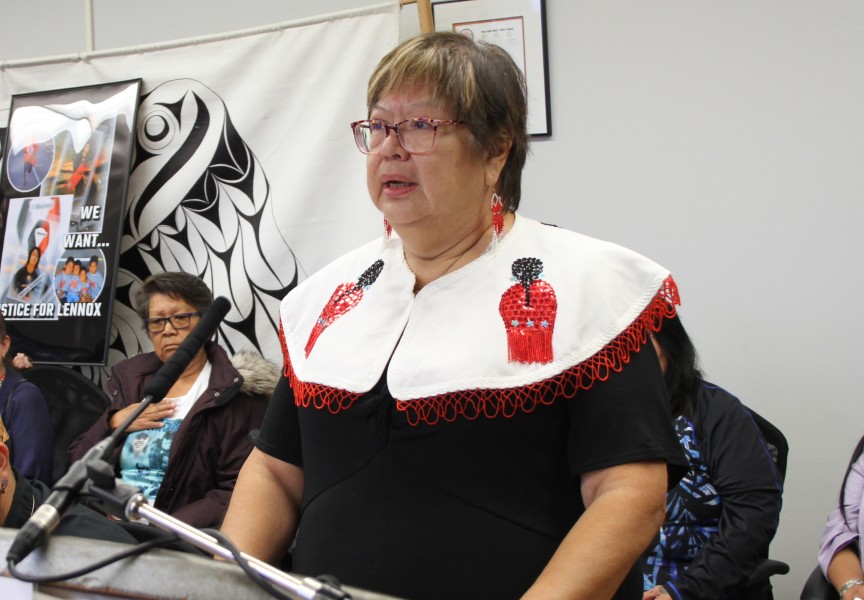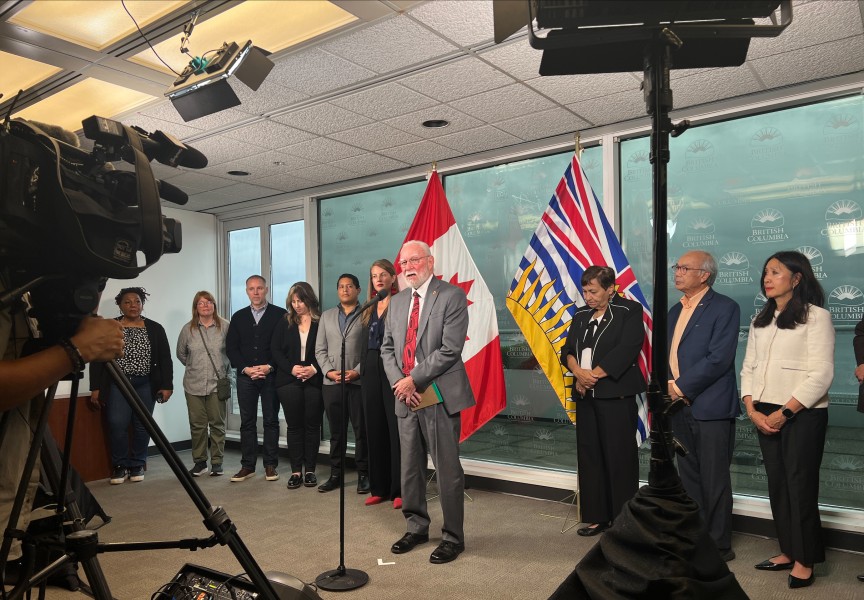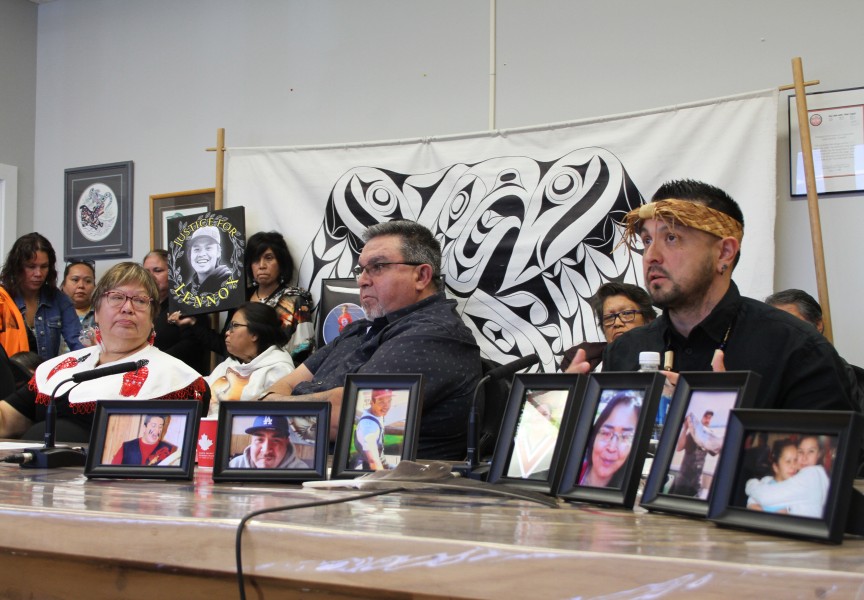With First Nations in B.C. having died at a rate 5.4 times higher than other residents in 2021, and Port Alberni, a hub for Nuu-chah-nulth, seeing an increase in drug induced deaths, Tseshaht First Nation organized a forum to address the opioid crisis.
“We're actually in a state of emergency for the amount of people that we've lost,” said Wahmeesh (Ken Watts), elected chief councillor of Tseshaht First Nation. “We've lost more people to [the] opioid crisis than COVID-19.”
Community members throughout the valley and from neighboring nations gathered for a two-day forum to discuss a way forward, protect youth, and fill gaps in services.
Identifying community needs
Gail Gus, Tseshaht First Nation’s Crisis Care and Wellness coordinator, said that this event is important to the community because the amount of toxic drugs have “ramped up” since the pandemic when the borders shut down.
“For me, as frontline, I don't want it to be a norm when people die,” said Gus. “I just want us to be able to help each other and fill the gaps to our services, because I think we can do that.”
“We just thought it was really important to not just develop a Tseshaht plan, or even a Nuu-chah-nulth plan, but a plan for the whole valley,” said Watts. “[This meeting is] everybody, unified, working together.”
Watts foresees a strategy being developed once information from the forum is finalized. The strategy will then be presented back to the community, with the intention of lobbying in a unified manner to gain what is needed in Port Alberni.
Among many solutions suggested was rapid access to detox beds and recovery services.
“When somebody says, ‘I need your help, I need to detox, I need to get away,’ they're trying to get away from the people that they're surrounded by that are continuously doing those drugs,” said Les Doiron, vice-president to Nuu-chah-nulth Tribal Council. “But there's no beds, there's no homes, there's no places to go.”
Doiron lost his nephew, Charles Leslie Alexander Doiron, last year to the opioid crisis. His nephew had asked for help prior to his death but there was nowhere available for him to go.
“I think that we need more and more infrastructure to be able to take our people to,” said Doiron. “You have to be very, very lucky in order to be able to find a facility to be able to go to get a detox bed.”
For Dr. Shane Longman, a physician in the Alberni Valley, among the many barriers is access to hospital beds. This is a resource that he would like more of.
Once admitted to the hospital, Longman is able to give patients medications such as suboxone or methadone, used in Opioid Agonist Therapy (AOT), to help transition individuals from using illicit drugs by preventing withdrawal and reduce cravings, at a more efficient pace.
“The benefit of having them in the hospital is that I can escalate it many times faster than I can do in the community,” said Longman. “For instance, with methadone, the patient needs to be monitored above a certain dose if you go quickly, whereas in the community, you must go slower because no one can monitor them in their own home.”
In the hospital patients can get to a therapeutic dose quicker and are more likely to progress to not using anymore, said Longman.
The window is smaller, rapid access to services required
“Drugs have changed over the years,” said Gus. “Everything has fentanyl, or other garbage, [such as] rhinoceros tranquilizer because we have that in Port Alberni right now.”
Gus said that due to increased toxicity, the window in which people can be helped has grown smaller.
“You have to take that window when you get it,” said Gus.
“They need help right now, not a week from now, not several weeks from now to go to some other detox in some other city,” said Watts. “I think that's why everybody's pushing for the same thing is they need one here in the Valley.”
Watts said that waiting for care out of town is unreasonable, and is likely discouraging people from facing their struggles.
“There's so many people that are addicted right now and actually want help,” said Watts.
The old model ‘just doesn’t work’
According to a recent B.C. Coroners Service report, 2022 ended with a total of 2,272 suspected illicit drug toxicity deaths, making it the second largest annual number of fatalities, following the 2,306 deaths from 2021.
Since the province of B.C. has declared a state of emergency in 2016 the rate of deaths have more than doubled.
In the 2023 budget, the province is allocating more than $1 billion in new funding, over a period of three years, to mental health and addiction services, with a $586 million investment in adding treatment and recovery services.
This includes 195 new recovery beds to be offered throughout the province. In an interview with Ha-Shilth-Sa, Jennifer Whiteside, minister of Mental Health and Addiction, said that one hundred beds of these beds are to be distributed throughout the Canadian Mental Health Association of B.C., adding to the current 105 beds that are being operated on behalf of the province.
The locations of these beds will be allocated based on capacity as well as community need, said Whiteside.
While the remaining 95 will be allocated to a program being developed at St. Paul’s Hospital, called Road to Recovery, plans are to expand this program throughout communities in B.C.
“I think there's no question that we are in the midst of an unrelenting poison drug crisis that is changing very quickly,” said Whiteside.
“We know that there are many gaps in our system. It's a very fragmented system,” she admitted. “Given the toxicity…of the drug supply, and the increasing challenges that [it] poses, the model that we've been working on just doesn't work.”
In addition to treatment and recovery beds, the $586 million is to “develop and roll out a new model of seamless care to support people through their entire recovery journey, create wraparound supports, expand Indigenous treatment centres, and develop new recovery communities to support people and their recovery through the long term,” reads the Ministry of Finance 2023 Budget backgrounder.
When asked about how remote communities will access these services, Whiteside said that the ministry, regional health authorities and the First Nations Health Authority are working together to identify the needs that rural and remote communities have involving access.
“[That is what] we're really working on with health authorities, to make sure that we have those services in a way that is accessible,” said Whiteside.
“We need to invest in things like transportation to get people to care, particularly in rural and remote areas,” she added. “And how to get health care to people who are in remote communities, which I think is particularly an issue for the territory of the Nuu-chah-nulth.”
“The other point I think that is so critical in all of this is to recognize that culture saves lives,” said Whiteside.
She explained that the ministry directed their efforts to supporting Indigenous-led solutions by supporting investments in land-based healing.
“We know that if we can reconnect or keep Indigenous people connected to their culture and their communities, that is the best path to wellness for them,” said Whiteside.
“We all have hope in that building,” said Gus outside of Maht Mah’s, where the opioid crisis forum was held. “I put my effort in where I know it’s going to a have an outcome, and this is going to have an outcome.”


